P3013 Error Code: Troubleshooting and Resolution Guide
In hybrid vehicles, the P3013 fault code can be a concerning signal of trouble within the hybrid battery assembly. As a driver, encountering this code can trigger a cascade of questions regarding the root cause, potential fixes, and associated costs. We will delve into the possible causes of the P3013 code, methods to address it, and considerations regarding the cost of diagnosis and repair.
Understanding the P3013 Code
The P3013 code specifically pertains to hybrid vehicles and indicates an issue within the hybrid battery assembly. This code typically signifies a malfunction or irregularity in the performance of the battery, affecting the vehicle’s hybrid system’s efficiency and functionality. While the code itself provides a clear indication of trouble, diagnosing the precise cause requires a comprehensive assessment of various components and systems.
Possible Causes of the P3013 Code
Degraded Battery Cells: Over time, the individual cells within the hybrid battery can degrade due to age, usage patterns, and environmental conditions. Degradation can lead to diminished battery capacity and efficiency, triggering fault codes like P3013.
Faulty Battery Management System (BMS): The BMS is responsible for monitoring and managing the hybrid battery’s performance and health. A malfunctioning BMS may misinterpret data or fail to regulate the battery’s operation effectively, resulting in fault codes such as P3013.
Electrical Issues: Wiring faults, loose connections, or damaged electrical components within the hybrid system can disrupt the flow of power to and from the battery assembly, causing irregularities that trigger fault codes.
Temperature Extremes: Exposure to extreme temperatures, whether excessively high or low, can expedite battery degradation and compromise its performance, potentially resulting in the appearance of fault codes such as P3013.
How to Fix the P3013 Code
Resolving the P3013 code requires a systematic approach to identify and address the underlying cause. Here are some common steps taken to rectify this issue:
Diagnostic Assessment: A thorough diagnostic procedure, typically performed by trained technicians using specialized tools and software, is necessary to pinpoint the exact cause of the fault code. This assessment may involve testing the battery cells, inspecting the BMS, and examining the electrical system for anomalies.
Battery Replacement or Repair: Depending on the severity of the problem and the extent of damage to the battery assembly, repair or replacement may be required. In some cases, individual faulty cells can be replaced, while in others, the entire battery pack may need to be swapped out.
BMS Calibration or Replacement: If the fault lies with the battery management system, recalibration or replacement of the BMS may be required to ensure proper monitoring and control of the battery’s operation.
Addressing Electrical Faults: Any identified electrical faults or wiring issues must be rectified to restore the integrity of the hybrid system and prevent future occurrences of fault codes.
Cost to Diagnose and Repair
The cost associated with diagnosing and repairing the P3013 code can vary significantly depending on factors such as the vehicle’s make and model, the extent of the issue, and the labor rates charged by the service provider. Diagnostic fees typically range from modest amounts to higher charges for more complex assessments involving advanced diagnostic equipment. Repair costs can encompass the expense of parts, labor, and any additional services required to resolve the issue comprehensively.
Given the variability in costs, hybrid vehicle owners should obtain multiple quotes from reputable service centers and weigh their options carefully before proceeding with diagnosis and repair.
